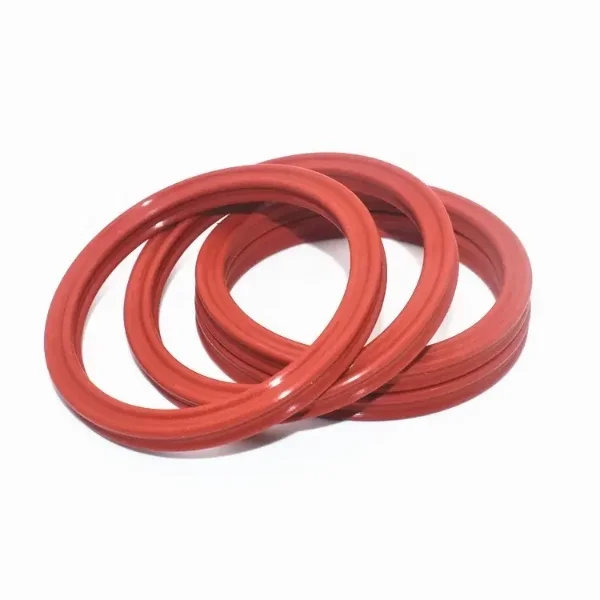Manufacturing process of silicone sealing rubber ring
Sealing rings are integral components in many industrial applications, due to their exceptional properties such as heat resistance, flexibility, and chemical inertness. In this blog post, Zhengli will share with you the manufacturing process of silicone sealing rubber ring for sale.
Understanding Silicone Rubber
Before we explore the manufacturing process, it's essential to understand the material itself. Silicone rubber is a polymer composed of silicon, oxygen, and carbon, with various additives to enhance its properties. It is known for its high thermal stability, UV resistance, and non-toxicity.
Manufacturing process of silicone sealing rubber ring
1. Material Selection and Preparation
The process begins with the selection of high-quality silicone base polymers. The polymer is then compounded with various additives such as fillers, colorants, stabilizers, and vulcanizing agents. Fillers are used to enhance the mechanical properties and reduce the cost, while vulcanizing agents are crucial for the curing process.
- Base Polymer: High-grade silicone polymer.
- Additives: Inorganic fillers, organic fillers, colorants, and vulcanizing agents.
2. Mixing and Compounding
The next step involves thorough mixing of the base polymer with the selected additives. This is typically done in a high-intensity mixer to ensure a homogeneous blend. The mixing process is critical as it affects the final properties of the silicone rubber.
- Mixing Equipment: High-intensity internal mixers.
- Objective: Uniform dispersion of additives within the polymer matrix.
3. Extrusion
Once the compound is ready, it is then extruded into a uniform rod or tube shape. Extrusion is a continuous process that involves forcing the compound through a die to achieve the desired cross-sectional profile.
- Extrusion Equipment: Single or twin-screw extruders.
- Parameters: Temperature, pressure, and screw speed are carefully controlled.
4. Vulcanization
Silicone rubber requires vulcanization to achieve its final properties. This is a curing process that involves the cross-linking of polymer chains through the action of vulcanizing agents, often with the application of heat.
- Vulcanization Methods: Heat curing, peroxide curing, or radiation curing.
- Curing Time and Temperature: Varies depending on the compound and the vulcanizing system.
5. Post-Curing
After the initial vulcanization, the silicone rubber may undergo post-curing to ensure complete cross-linking and to achieve optimal physical properties. This step is often done in an oven at a controlled temperature.
- Post-Curing Oven: Maintains a consistent temperature for uniform curing.
- Duration: Typically several hours to ensure complete curing.

6. Inspection and Quality Control
Each batch of silicone rubber rings is subject to rigorous inspection and quality control measures to ensure they meet the required specifications. This includes testing for dimensions, hardness, tensile strength, and other physical properties.
- Testing Equipment: Calipers, hardness testers, and tensile testers.
- Standards: Adherence to industry standards such as ASTM, ISO, or DIN.
7. Cutting and Shaping
The extruded and vulcanized silicone rods or tubes are then cut into the desired lengths and shapes. This can be done using various cutting techniques, including laser cutting for precision.
- Cutting Techniques: Die cutting, laser cutting, or water jet cutting.
- Precision: High precision is required for critical applications.
8. Finishing
The cut silicone rubber rings may undergo a finishing process to remove any flash or burrs, and to ensure a smooth surface finish. This can be done using trimming tools or abrasive methods.
- Finishing Techniques: Trimming, grinding, or buffing.
- Objective: To achieve a clean and smooth edge profile.
9. Packaging and Storage
The finished silicone sealing rubber rings are carefully packaged to protect them from environmental factors and to facilitate transportation. Proper storage conditions are crucial to maintain the integrity of the product.
- Packaging Materials: Anti-static bags, protective tubes, or boxes.
- Storage Conditions: Cool, dry, and away from direct sunlight.
10. Shipping and Distribution
Finally, the packaged silicone rubber rings are shipped to customers or distributors. The logistics process must ensure that the product reaches its destination in the same condition as it left the factory.
- Shipping Methods: Depending on the quantity and destination, this could involve air, sea, or land transport.
- Traceability: Each batch is tracked to ensure timely delivery and quality assurance.
Conclusion
The manufacturing process of silicone sealing rubber rings is a complex and meticulous operation that involves several stages, from material selection to shipping. Each step is carefully controlled to ensure the production of high-quality, reliable, and durable products that meet the stringent requirements of various industries.
https://www.allaboutrubber.com/Manufacturing-process-of-silicone-sealing-rubber-ring.html
Zhengli
neil@zlrhome.com
Post Comment